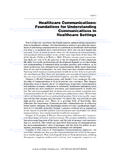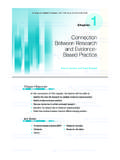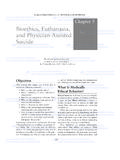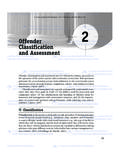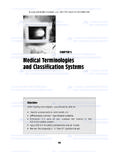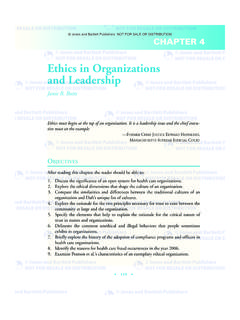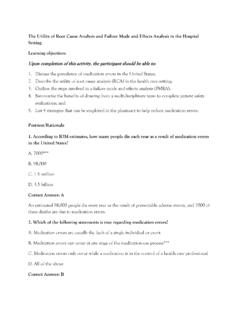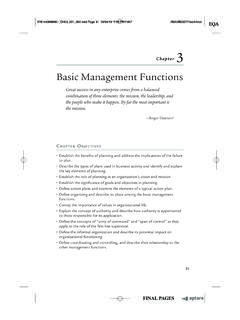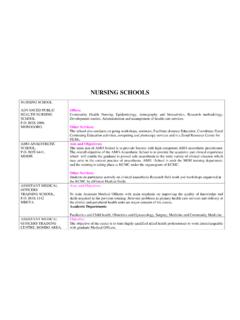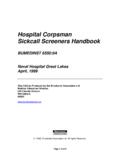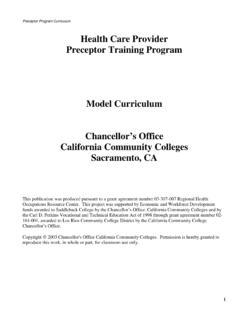Transcription of CHAPTER 2 Medical Records and Managed Care
1 3/13/06 10:51 AM Page 19. Jones and Bartlett Publishers. NOT FOR SALE OR DISTRIBUTION. CHAPTER 2. Medical Records and Managed care CHAPTER objectives Define utilization management and utilization review organiza- tion. Explain the role of patient information with respect to the uti- lization management process. Compare and contrast the following: HMO, PPO, IPA, GPWW, consolidated Medical group, PHO, MSO, foundation model IDS, physician ownership model IDS, PBM, and disease management organization. Identify the characteristics of the Managed care industry that have changed the nature of patient Records .
2 Describe the changes in Medical Records standards made in re- sponse to the growth of Managed care whether instituted by legislatures, accreditation organizations, or health information managers. Describe the information protected by the HIPAA Privacy Rule and explain how privacy rules affect health plans. Introduction Although the Medical record originally developed as a business record of individual healthcare providers (primarily hospitals and physicians), it is now a document that supplies health information critical to conti- nuity of care , is subjected to substantial state and federal regulation, and is owned as much, if not more, by the patient as by the provider.
3 19. 3/13/06 10:51 AM Page 20. Jones and Bartlett Publishers. NOT FOR SALE OR DISTRIBUTION. 20 CHAPTER 2: Medical Records AND Managed care . Several forces contributed to this transition, including increased emphasis on the importance of documentation in Medical training;. Medical Records standards incorporated in accreditation and certifica- tion requirements, and the development of formal utilization controls for healthcare services, culminating in the Managed care revolution of the late 1900s. Utilization Review One factor in the increase in the scope and quality of Medical Records was a requirement that was beginning to be imposed by payers around mid-century namely, that providers document the need for, and pro- vision of, services in exchange for payment.
4 The beginning of the Medicare and Medicaid program operations in 1966 was a watershed year for formal utilization review because the program operations re- quired most hospitals and nursing facilities that wished to participate to maintain utilization review programs in order to obtain and main- tain In 1972, Congress added an additional layer of re- view, by professional standards review organizations (later known as peer review organizations and quality improvement organizations),2. and imposed a specific obligation upon providers to support their pro- vision of services by evidence of Medical necessity and quality in such form and fashion and at such time as may reasonably be required by a reviewing peer review organization in the exercise of its duties and re- sponsibilities.
5 3 The federal peer review program extended not only to institutions, but also to physicians and other Managed care The impetus for the development of utilization review was burgeoning healthcare costs. A related effort by Congress to address quality and 1. See, , 42 , requiring most hospitals seeking to participate in the Medicare program to have in effect a utilization review plan that provides for review of services furnished by the institution and by members of the Medical staff to patients en- titled to benefits under the Medicare and Medicaid programs.
6 2. 42 1320c-3. 3. 42 1320c-5. 4. 42 1320c-5. 3/13/06 10:51 AM Page 21. Jones and Bartlett Publishers. NOT FOR SALE OR DISTRIBUTION. Managed care Organizations and Related Entities 21. cost of health care is found in the Health Maintenance Organization Act of 1973, which provided for the development and operation of health maintenance organizations (HMOs), primarily in an effort to ensure appropriate coordination and quality of care , but ultimately to contain rising healthcare costs as This legislation laid the groundwork for the Managed care revolution.
7 The concept of Managed care quickly came to include within its umbrella not only HMOs, but also preferred provider organizations (PPOs), point of service plans (POSs), and other entities involved in the coordination and delivery of health care . In 1977, indemnity plans accounted for 96 percent of all job based health plan enrollment; by 1998, indemnity plans held only 14 percent of the market; HMOs held 27 percent; POS plans, 24 percent; and PPO plans, 35 A fundamental tenet of Managed care is that coordination of care will produce higher quality, lower cost outcomes.
8 The pioneering HMO. model had sought to furnish most, if not all, covered services required by enrollees in-house through physicians employed by, and facilities owned and operated by, the HMO. This approach naturally suggested a comprehensive central Medical Records database. Other forms of man- aged care organizations had to obtain information concerning enrollees from a broad range of providers and suppliers in order to coordinate care , and compiling and maintaining a centralized database would prove to be more difficult. To understand the Medical Records issues that arise in the Managed care environment, this CHAPTER discusses below the broad range of Managed care entities that operate today.
9 Managed care Organizations and Related Entities The term Managed care organization (MCO) is now widely used to en- compass various forms of healthcare coordination in the United States. Health Maintenance Organizations HMOs are organized healthcare systems that are responsible for both financing and arranging for the delivery of a broad range of 5. See Pegram v. Herdrich, 530 211, 233 (2000). 6. J. R. Gabel, Job-Based Health Insurance, 1977 1998: The Accidental System Under Scrutiny, Health Affairs (November/December 1999): 67. 3/13/06 10:51 AM Page 22.
10 Jones and Bartlett Publishers. NOT FOR SALE OR DISTRIBUTION. 22 CHAPTER 2: Medical Records AND Managed care . comprehensive health services to a defined population. Some HMOs can be viewed as a combination of healthcare insurer and healthcare delivery system. Whereas traditional healthcare insurance companies are responsible for reimbursing covered individuals for the cost of their health care , HMOs are responsible for arranging for the provision of healthcare services to their covered members through affiliated providers who are reimbursed under various methods.


